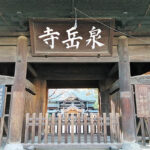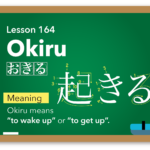

December 31, 1864 – August 16, 1929
津田 梅子 Tsuda Umeko
A Person Dedicated Her Life to Japanese Women’s Education
In modern times, electronic payment methods such as credit cards or Apple Pay have become common. However, Japan’s adoption of cashless transactions remains around 30%, which is relatively low compared to global standards. Many shops still only accept cash, and situations like taxi rides and vending machines often require cash payments.
Japan’s currency includes four types of banknotes and six types of coins, with ¥10,000, ¥5,000, ¥2,000, and ¥1,000 (though the ¥2,000 bill is rare). Compared to other countries, Japanese banknotes are known for their cleanliness, which often surprises visitors.
Japanese banknotes are set to undergo their first redesign in 20 years by 2024. This article features Tsuda Umeko, who was chosen to be the new face of the ¥5,000 bill. The criteria for selecting portraits are not specified, but they require that the person be well-known among the general public and that high-quality photographs or paintings of the person can be obtained. Higuchi Ichiyo, currently featured on the ¥5,000 bill, was chosen for representing the advancement of women’s status in Japanese society and progress towards gender equality in the new era.
Tsuda Umeko, selected for the new banknotes, founded the Women’s Institute for English Studies, “Joshi Eigaku Juku,” now known as Tsuda University. She dedicated her life to the education of Japanese women. Let’s take a closer look at her life and the environment in which Japanese women lived during that time.
Foundation of Personality through Experience of Studying in the United States
Tsuda Umeko was born in Tokyo (known as Edo at the time) in 1864. At the age of 6, she embarked on a transformative journey to the United States as part of the Iwakura Mission in 1871, where she was the youngest among five female students.
Among these female students studying abroad, other individuals left a mark on history later in their lives, such as Sutematsu Oyama (maiden name Yamakawa), who was involved in the establishment of Japan’s first nursing school, and Shigeko Uryu (maiden name Nagai), who learned piano and contributed to western music education in Japan.
During her time in America, Umeko was under the care of Charles Lanman and his wife, Adeline, who became profound influences in her life. Within a year of living with them, she embraced Christianity, inspired by Mrs. Lanman and other American women whose moral teachings were rooted in the Bible.
In her eyes, American women’s social status seemed higher than those in Japan. These experiences during her study in America led to the foundation for her lifelong dedication to education for the advancement of women’s social status.
Initially intending to stay for ten years, Umeko extended her stay by an additional year, spending a total of eleven years in the United States until she turned 18. During this time, she received primary and secondary education, setting the stage for her future endeavors in Japan.
Disappointment with the Treatment of Women in Japan
Despite her determination to contribute to Japanese society based on her experiences abroad, Tsuda Umeko was profoundly disappointed by the stark differences in how women were treated in America versus Japan. She observed that in America, it was common for men to give up their seats on trains for women, a gesture rarely seen in Japan.
Additionally, unlike in America where marriages were typically based on personal choice, Umeko noted the prevalence of arranged marriages in Japanese society. Umeko strongly felt that Japanese men had the power to choose women in marriage, and women were expected to obey without question, which is a different value from that of the States.
Moreover, there were hardly any job opportunities for women in Japanese society, which was another major cultural shock for her.
She believed that the reason laid in the lack of importance placed on higher education for girls. In order to elevate the status of Japanese women, it was necessary to create an environment where they could receive education similar to that of men. Driven by this conviction, Umeko pursued this goal with determination. With the guidance of Ito Hirobumi, she was appointed as a professor at the Peeresses’ School, aiming to create an educational environment for girls comparable to that available to boys.
Studying Women’s Education During Her Second Study Abroad to Establish the “Joshi Eigaku Juku”
In 1889, recognizing the importance of furthering her understanding of Western thought to better educate others, Tsuda Umeko decided to study abroad in America for the second time.
Despite initial financial concerns, Umeko was assured by the principal of the Peeresses’ School that she would continue to receive her salary during her two-year study abroad. This support enabled her to pursue a high-quality education in small class settings. She extended her studies for an additional year to deepen her knowledge of women’s education.
During her studies, Umeko collaborated with Mrs. Morris, whom she had met during her first study abroad, to raise $8,000 and establish the “Japanese Women’s American Scholarship” committee. This initiative aimed to provide scholarships for Japanese women to study in America.
As her second study abroad came to an end, Umeko was offered the opportunity to remain at Bryn Mawr College to continue her research, but she declined, feeling compelled to return home to educate Japanese women.
Upon her return in 1892, Umeko resumed her professorship at the Peeresses’ School and also served as a professor at the Women’s Higher Normal School. Additionally, she took in female students at her home, providing them with education and guidance.
Driven by her vision for women’s education that respected individuality and offered advanced learning outside of government-established institutions, Umeko aimed to establish a “private school.” In 1900, at the age of 35, she resigned from her position at the Peeresses’ School to found her private institution.
At the opening ceremony, she said,
“For true education, a teacher’s enthusiasm and a student’s research spirit are important; small group education is desirable to provide instruction tailored to each student’s individuality; and as a human being and a woman, we must be all-round.”
These words have been passed down to the students as the educational spirit of the “Joshi Eigaku Juku.”
Tsuda Umeko’s Will is Inherited Even After Her Death
The influence of Tsuda Umeko’s educational legacy extended far beyond her lifetime. Graduates of the “Joshi Eigaku Juku,” who received her enthusiastic guidance, often described her education as strict. Despite this, many graduates held deep trust and admiration for her, evident in the continuous visits by former students and friends even after her retirement as head of the school in 1919, when she spent her remaining days on her sickbed.
Even after her passing, Tsuda Umeko’s vision persisted through the “Japanese Women’s American Scholarship” system, which provided opportunities for 25 women to study in America until 1976. Among the recipients of this scholarship were women who made significant contributions in various fields. For instance, Hoshino Ai served as the president of Tsuda University, Fujita Taki became the first female representative of Japan at the United Nations, and Takahashi Yuko is the current president of Tsuda University. These individuals have had a profound impact on education in Japan.
Following World War II in 1948, the “Joshi Eigaku Juku” was renamed “Tsuda University.” This institution continues to provide education for women who contribute to society, producing the first female professors at the University of Tokyo, researchers across various disciplines, and even politicians.
.
.
.




